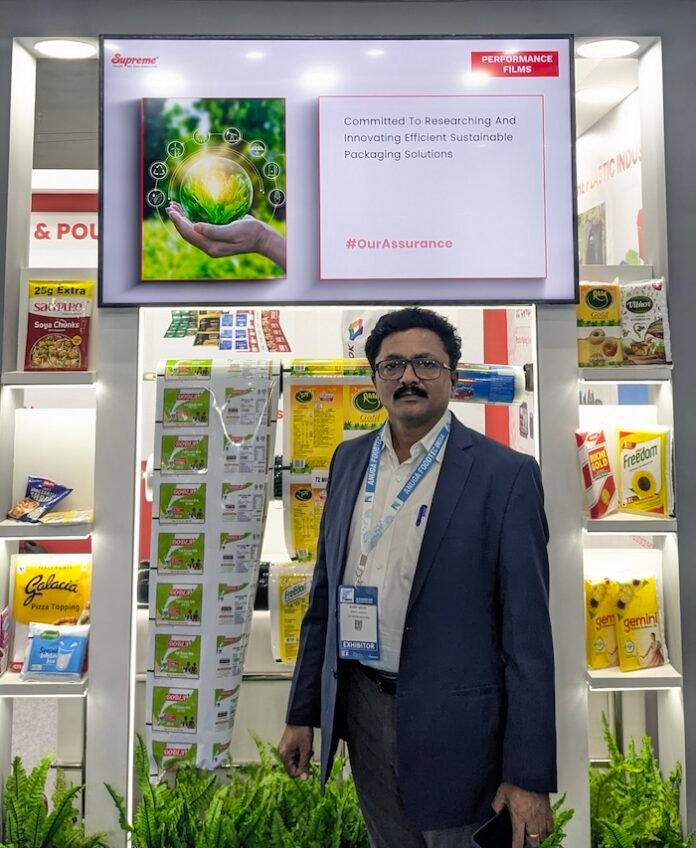At the recently concluded Anuga FoodTec exhibition in Mumbai, Supreme Industries, one of India’s leading polymer processing companies, showcased its product portfolio with a focus on its performance films division. Bharat Jadhav, GM and head of sales and marketing for the division, shared insights into the company’s offerings, the market dynamics, and the future of sustainable packaging.
Founded over eight decades ago, Supreme Industries has grown significantly as a polymer processor. “Supreme is known as the largest polymer processing house in India,” Jadhav noted. “We were among the early pioneers to introduce material barrier films in the Indian market, and that legacy continues to drive us forward.”
The Performance Films Division, represented by Jadhav at the event, specializes in multilayer co-extruded films, commonly known as barrier films, which serve a wide range of food packaging needs. These films play a critical role in sectors such as liquid packaging, edible oils, dairy, and protein-based products.
Supreme’s performance films division operates out of its Khopoli facility, approximately 70 kilometers from Mumbai. The plant contains four blown film lines, including three from W&H and one from Brampton, with a monthly installed capacity of around 1,500 metric tons.
“Our focus has always been on delivering performance-oriented packaging solutions that meet evolving market needs. As product categories expand and consumer demands for quality and shelf life grow, barrier films have become essential to ensure product integrity and brand value,” Jadhav said.
Highlighting the practical challenges of achieving true sustainability in performance films, he added, “Sustainability is the need of the hour, but it’s still an evolving concept. For example, I can make a single polymer film with a nylon barrier content of 5% that is 100% recyclable. However, completely eliminating materials such as nylon or EVOH is not yet feasible because the alternatives either fail to match performance requirements or are not commercially viable.”
He emphasized that the industry needs solutions that balance three critical aspects – performance, commercial viability, and environmental impact. “It’s not enough for a packaging material to be labeled sustainable; it must also protect the product, be machinable for filling and sealing, printable, and meet the brand’s functional needs,” he said.
Jadhav also pointed out that while there is a strong push for sustainability in theory, its adoption often falters at the implementation stage due to cost sensitivities and market resistance. “The Indian market, like many others, is highly price-sensitive. For sustainability to succeed, solutions must make economic sense to the entire value chain,” he added.
The value of barrier films
Using various examples, Jadhav illustrated why barrier films remain indispensable in certain product categories. “Take meat products or snacks such as chips. Without proper barrier packaging, you can’t guarantee freshness, taste, or aroma. Consumers pay for that quality experience, and poor packaging can destroy a brand’s reputation,” he explained.
This highlights the importance of looking at sustainability holistically, considering the entire product lifecycle rather than focusing solely on packaging material. “People are gradually adapting to more sustainable solutions where it’s feasible, but for high-performance applications, we’re still waiting for technologies that meet all requirements,” he said.
He described the exhibition as a valuable platform for connecting with end-users and showcasing innovations for their needs. “This event is particularly important for us because it focuses on markets we serve directly. It allows us to engage with customers, understand their requirements, and explore how we can help them with various solutions.”
Commenting on the company’s plans, he commented that “Expansion is always on the horizon. In our division, we are looking forward to capacity expansion to meet rising demand, both in terms of machinery and output.”










